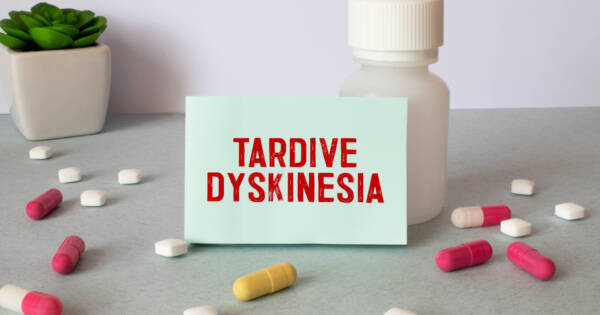Type 2 Diabetes is a chronic condition that affects more than 3 million Americans each year. It affects you at any age, but the most common diagnoses occur after the age of 40, giving it the nickname adult-onset diabetes.
It occurs when the body doesn’t produce enough insulin or resists insulin. Treatments for type 2 diabetes vary, and everyone doesn’t need everything available. Everyone can benefit from lifestyle changes. Sometimes, proper exercise and diet can delay or even prevent the need for medications.
Risk Factors and Complications
Some people are more at risk of developing Type 2 diabetes than others.
Risk factors include:
- Family history
- Obesity
- High blood pressure
- High cholesterol
- For women, history of gestational diabetes
- Smoking
- Sedentary lifestyle
Gone untreated, diabetes can lead to serious complications such as:
- Kidney disease
- Nerve damage
- Stroke
- Glaucoma, cataracts, and other eye problems
You can delay or prevent these complications with proper treatment. A type 2 diabetes diagnosis may be disappointing to hear, but there are things you can do to take care of yourself. There’s no cure for type 2 diabetes, but you can manage it.
It’s important to stay in close contact with your doctor so they can prescribe the best plan for your situation. They will also monitor your medications and determine what, if anything, needs to change. There are also many self-care options that you can do yourself. The latest research on diabetes treatments leads to more medications and lifestyle changes all the time.
Diet
It’s important for anyone to have proper diet and exercise, but it’s more so for those with type 2 diabetes. Some lifestyle changes will be necessary. The first question when you’re diagnosed with type 2 diabetes is “What am I allowed to eat?” The good news is that those with type 2 diabetes don’t need to deprive themselves of their favorite foods.
The easiest way to determine a healthy diet is to make sure about 1/4 of your plate contains high protein foods. Proteins such as meat, soy or dairy products are essential to any healthy diet. Half of your plate should be non-starchy vegetables like greens, onions, or mushrooms. The remaining 1/4 of your plate should be carbohydrates.
One of the most confusing aspects of a healthy diet are the carbohydrates. Are they good or bad? There are different kinds of carbohydrates. Nutrition labels that count total carbohydrates include all the complex carbohydrates, sugar, and fiber.
Complex carbohydrates (also known as starches) include:
- some vegetables like peas, corn, or potatoes
- beans such as kidney or black beans
- grains such as oats
The when selecting grains, whole grains are best. They have all the nutrients you will need from a carbohydrate. Refined grains are okay, but they only have a portion of the nutrients.
Sugars include:
- Natural sugars that are in fruit and dairy products
- Artificial and added sugars such as those found in sweets like cookies, donuts, and cake
Diabetics have been told in the past to avoid sugar all together. Now, it’s recognized that you can have small amounts of sugars and still be healthy. That doesn’t mean go overboard. The best way is to save desserts for special occasions. That way you can still enjoy your favorite foods in moderation without depriving yourself.
Fiber is in foods like:
- Beans
- Whole grains
- Nuts
- Fruits and vegetables, especially those with edible skin like apples and cucumbers
Try to get all your fiber from healthy foods rather than supplements.
There’s no master list of what you can and cannot eat. Everyone has different health situations and personal tastes. The main things to focus on in your diet are carbohydrates, fiber, fat, and salt. You should also keep in mind that moderation is key. Adopting a healthy diet will help you to lose extra weight and better manage your condition.
Exercise
Don’t start any exercise program without consulting your doctor. If you’re not used to physical activity, it can be dangerous to start too hard. No matter what your age is, you can start a healthy, active lifestyle. Your workout doesn’t have to be vigorous to be effective. Your activities could be as light as a thirty-minute walk on your lunch break every day. It’s that easy.
When you exercise, your cells are able to use any available insulin to take up blood glucose because you increase insulin sensitivity. If you’re regularly active, in time you’ll also lower your A1C levels. The blood glucose reaction depends on your level of physical activity, your history, and other factors. You can see the benefits by taking your levels before and after exercise.
Medications
In some cases, diet and exercise are not enough to control type 2 diabetes. If you do need medication, you should make sure that you follow your doctor’s instructions. You may need to take pills and/or insulin to control your glucose levels.
Doctors may use a drug like metformin to help the liver hold on to the glucose it produces. Other medications help the pancreas to produce more insulin. DPP-4 Inhibitors get the body from breaking down hormones that make the pancreas produce insulin. This helps your blood sugar lower after a meal.
Medicines like thiazolidinediones or TZDs help the insulin your body produced to work better. Alpha-glucosidase inhibitors slow the digestion of complex carbohydrates like starchy vegetables and bread. You may take drugs for cholesterol or to help you urinate more sugar.
Sometimes medications for type 2 diabetes stop working after some time. Nobody knows why this happens. If it does, your doctor may prescribe more than one medication to work together, also known as oral combination therapy.
In the End
Conditions such as obesity and high cholesterol can raise your risk for type 2 diabetes, but getting a type 2 diabetes diagnosis is not always a reflection on your lifestyle. Things out of your control such as family history can contribute to your diagnosis as well. No matter what the reason is you have it, you can do all you can to control it.
There are several ways you can take care of yourself to control your condition. You should also work with your doctor to make sure you are doing everything you can to stay healthy.
 Andrew Haddon / Shutterstock.com
Andrew Haddon / Shutterstock.com


